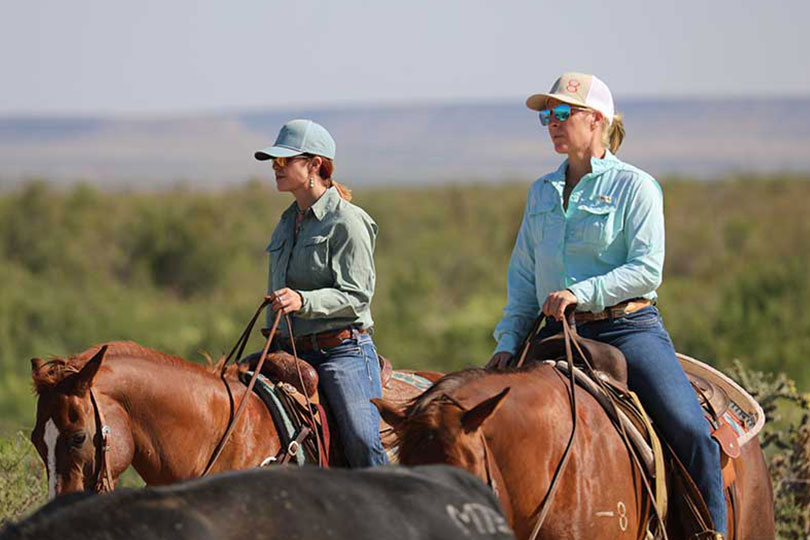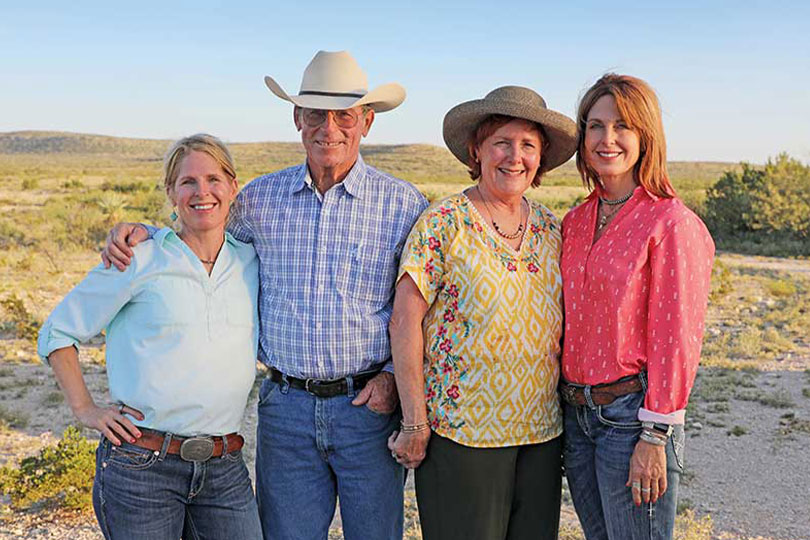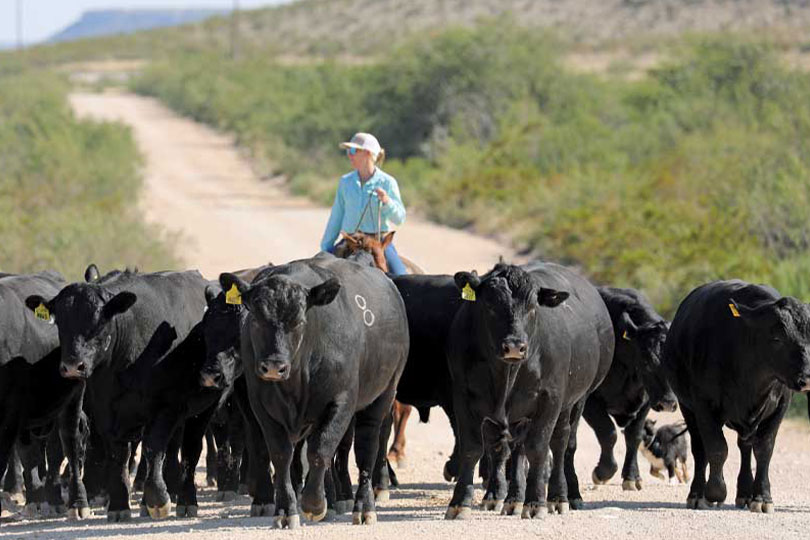By Shelby Shank
Field Editor
For generations, the McKenzie family land has been more than a ranch. It’s been a home. A place where children learned to ride before they could walk, long days of work gave way to evenings with family, and the legacy of ranching and farming continues to grow with each new season.
How it all began
The McKenzies’ agricultural roots date back to the 1880s in Tucumcari, New Mexico.
For decades, the family managed both cattle and crops there, but years of drought and dwindling irrigation water forced them to move.
In 1979, Houston McKenzie and his wife, Laura, moved south to Fort Stockton with their two daughters, Lydia and Sarah.
“When we first arrived, things were pretty rough,” Houston said. “We didn’t have sprinklers then, just flood irrigation, and labor was scarce. It took a lot of hard work to keep things going.”
That hard work came from everyone in the family. Long days and nights were spent improving the ranch, keeping cattle fed and harvesting hay. Over time, their persistence paid off.
“We’ve come a long way since those early years,” Houston said. “Now, we have sprinkler irrigation, better equipment and are more efficient. The operation is successful now, but it hasn’t always been easy. It took hard work and a good bit of luck, too.”
The ranch
Today, McKenzie Land and Livestock is run by Lydia and Sarah, who manage 200 cows across 18,000 acres of arid rangeland.
Each September marks their “new year,” as calving season begins just as they wrap up their last cutting of hay and preparations start for the family’s fall bull sale.
They use artificial insemination to select top genetics for their herd, followed by cleanup bulls after 60 days.
The McKenzies aim to calve within a three-month window, ensuring that bulls offered at their sale are uniform in size and quality, while replacement heifers are kept for the family herd.
Over the years, the McKenzies have raised a variety of breeds—Charolais, Brangus, Brahman and Hereford. But Angus has proven to be the best fit for their ranch.
“They tolerate the heat. They’re versatile, and they produce the kind of marbling and tenderness that makes for a really good steak,” Lydia said. “We care about traits that make them work in this arid climate. We want good feet, efficiency, and our cattle have to be tough to thrive out here.”
Their greatest pride, however, doesn’t come from the genetics or the success of their herd, but working side by side as family.
“Some of my favorite memories were working with my kids,” Sarah said. “Feeding cows, even when it went terrible, it was still great. I’m proud of what we’ve accomplished as a family and that we continue to work together and want to work together.”

The farm
While Lydia and Sarah manage the ranch, Lydia’s husband, Anthony May, oversees the farm.
The family farms 310 acres of alfalfa and Bermuda grass under pivot irrigation.
“We start our water in February, and our first cut is typically in April,” Anthony said. “We cut every 28 days, and the last three years we’ve consistently gotten eight cuts, averaging 10 tons per acre. When I first got here, we were only making seven.”
Most of their hay is sold directly to buyers, with some staying local and much of it moving east toward Austin. The family depends heavily on their own hay to feed bulls through the winter, setting aside about 300 tons annually.
In a good year, the farm produces an average of 17,000 bales of hay per cutting and is a critical piece of the ranch’s success and sustainability.
Drought challenges
Drought remains the family’s greatest challenge.
“The last five years have been really hard. If we didn’t have the farm to sell hay or feed our cattle, we would’ve been forced to sell cattle,” Lydia said. “The farm has kept us in the ranching business more times than I can count.”
Drought has forced the McKenzies to vacate their ranch and relocate cattle twice in the last five years.
“We’ve invested so much time, money and emotion in our genetics, we don’t want to have to start over,” Sarah said. “But I’ve used this as an opportunity to fine-tune what we’re looking for in our herd by removing late calving cows and focus on chasing the genetic traits that matter most to us.”
The unpredictability of the weather is always at the forefront.
“We’re at the mercy of the weather,” Laura said. “Those outside of agriculture don’t understand how difficult it is. Farmers and ranchers can’t control the weather, yet it’s integral to our production and our success.”
And when it does rain, flooding creates challenges, too.
“This June, we had 300 acres of grass underwater,” Anthony said. “We don’t need extra water, and when too much comes at once, it makes it tough. But the ranch needs the rain, so we try not to complain.”
Leaving a legacy
For the McKenzie family, ranching and farming is more than a lifestyle. It’s a legacy they’re proud of.
“Agriculture is truly a noble profession,” Sarah said. “We feel enormous responsibility and pride because we are feeding the world. I want my children to know that agriculture can provide for them and is the best profession anyone could have.”
To Lydia, the ranch is the same as it always has been, even as it changes.
“Nothing’s changed at the ranch, but at the same time it really has,” she said. “I came back to the ranch for more than this lifestyle. There’s a pride and legacy that you want to be part of and pass on.”
For Houston, the reward comes in the everyday moments.
“We’re the luckiest people in the world because we get to work with our daughters and son-in-law, and watch our grandkids grow up on the ranch,” he said. “Riding a good horse, working good cattle and being with your family—I couldn’t be happier.”



Nice article. My Grandparents were from Tucumcari and I went to high school in Pecos so I can relate with the very dry conditions. Some of my family wee cotton farmers between Pecos and Balmorhea and back in the 70’s but had to give it up because of droughts.